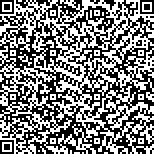| 摘要: |
| 文章在375个休闲农业点基础上,通过地理编码建立数据库,运用比较、缓冲、可视化工具对郑州市休闲农业空间布局进行深入分析。研究表明:(1)在空间集聚上,倾向市区、邻近高速路网,在惠济区、二七区、登封市等地区形成集聚。(2)在时间变化上,整体增长量渐多、局部存在波动。(3)在经营主体上,以个体或农户为主,客商、社会资本或外商为辅。(4)在经营类型上,以生态农园、休闲农园、休闲渔园为主,观光农园、科技农园、农业公园、市民农园为辅。据此提出:(1)优化建设惠济、二七、登封等核心区,重点开发新密、新郑、中牟等次核心区。(2)重点建设沿黄休闲农业带、丘陵休闲农业带、郑少休闲农业带。(3)引导农民向集企或合作社或乡村集体的转型,改革客商、社会资本或外商的优惠政策。(4)在保持原有优势类型的基础上,在市区增加市民农园、农业公园等,在县(县级市)增加科技农园、观光农园等类型建设。 |
| 关键词: 休闲农业 空间布局 实证研究 郑州市 |
| DOI:10.7621/cjarrp.1005-9121.20160236 |
| 分类号: |
| 基金项目:河南省教育厅人文社会科学研究项目“基于城乡统筹的郑州市休闲农业空间布局优化研究”(2014-hg-069) |
|
| AN EMPIRICAL STUDY ON SPACIAL LAYOUT OF ZHENGZHOU LEISURE AGRICULTURE |
|
Yang Xiaona
|
|
Tourism Management Department of Henan University of Animal Husbandry and Economy, Zhengzhou 450011, China
|
| Abstract: |
| To promote the optimization of spatial layout of Zhengzhou leisure agriculture, a database of 375 leisure agriculture points was set up through geocoding. Based on the comparative analysis, buffer analysis and visualization analysis, the conclusions were as follows: firstly, the spatial agglomeration tended to downtown, the HuiJi district, Erqi district and Dengfeng city, adjacent to highway system. Secondly, within long time, the overall Zhengzhou leisure agriculture points grew, but fluctuated partially. Thirdly, the operators were mainly individual or farmers and other merchants, social capital or foreign subsidiary. Fourthly, the main operating types were ecological plantations, leisure plantations and recreational fishing, and complemented by science and technology plantation, agricultural park and citizen farm. Accordingly, the followed suggestions were proposed: firstly, to optimize the construction of core areas, i.e., HuiJi district, Erqi district, Dengfeng city, and mainly to develop the sub-core areas, i.e., Xinmi city, Xinzheng city and Zhongmu county. Secondly,to give priority for the construction of leisure agriculture area along the Yellow River, hilly leisure agriculture area, and Zhengshao leisure agricultural area. Thirdly, to help farmers transform to collective enterprise, cooperation and rural collective enterprise; and reform the preferential policies of merchants, social capital, or foreign merchants. Fourthly, to develop citizen farm and agricultural park in urban area and increase plantations of science and technology and sightseeing plantations in the county and county-level cities while keeping the original advantage type. |
| Key words: leisure agriculture spatial layout empirical study Zhengzhou city |

